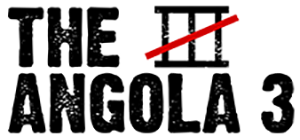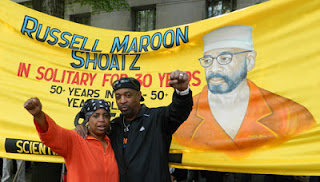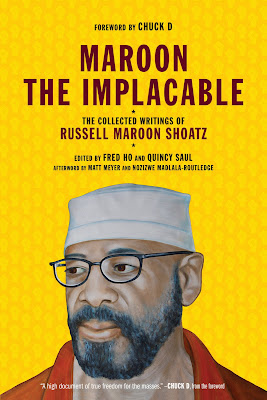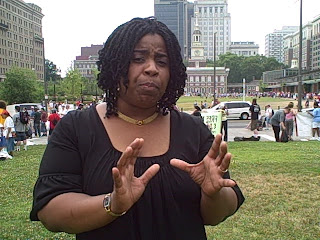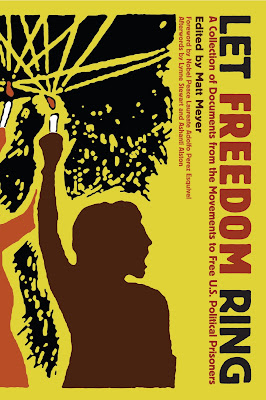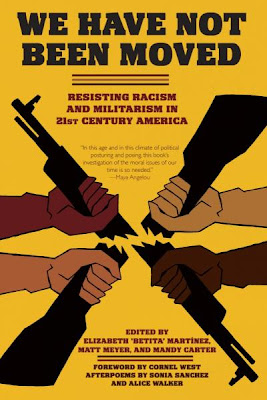Russell ‘Maroon’ Shoatz Files Lawsuit Protesting 22 Consecutive Years in Solitary Confinement –An interview with Dan Kovalik and Bret Grote
(PHOTO: Maroon’s daughter, Theresa Shoatz, with Chuck D at NYC event.)
Russell ‘Maroon’ Shoatz Files Lawsuit Protesting 22 Consecutive Years in Solitary Confinement
–An interview with Dan Kovalik and Bret Grote
By Angola 3 News
Earlier this week, on Wednesday, May 8, lawyers for Russell ‘Maroon’ Shoatz filed a federal lawsuit regarding his placement in solitary confinement for over 22 consecutive years. The written complaint, directed at Pennsylvania Department of Corrections Secretary John Wetzel and the Superintendents of SCI-Greene, where Shoatz was last held, and SCI-Mahanoy, where he was transferred to on March 28, 2013, states that this “is an action for injunctive, declaratory and monetary relief for violations of the Eighth and Fourteenth Amendments of the United States Constitution.”
Last month, when a 30-day action campaign was launched calling for Russell ‘Maroon’ Shoatz’s immediate release from solitary confinement, the campaign promised to file this litigation if Maroon had not been transferred into general population by the morning of May 8. On Thursday, May 9 the lawsuit was announced at a press conference was held in Pittsburgh, outside the City-County Building.
An update released on May 1 argues that the campaign “can already claim a victory” because “Maroon’s case and his work has received more attention over the past month that at any time during his incarceration.” One new article about Maroon was published by Solitary Watch and co-authored by Kanya D’Almeida and Bret Grote, who is also interviewed below. D’Almeida and Grote write that maroon’s “only time in the general prison population in the last 30 years was an 18-month stint spent at the federal penitentiary at Leavenworth that ended in 1991.” Furthermore, they note that Maroon has had only one violation since 1989 and “his most recent violation was in 1999, when he covered a vent in his cell that was blowing cold air in an attempt to stay warm.”
Underscoring their argument that Maroon’s confinement is politically motivated, they write that “in 1982 he was released into the general prison population at the State Correctional Institution (SCI) Pittsburgh. Upon return to the general population Maroon became involved with the Pennsylvania Association of Lifers (PAL), a prison-approved organization that was supposed to further the interests of life-sentenced prisoners… Maroon’s reputation and the respect other prisoners had for him led to a dramatic increase in participation in the PAL. More than 100 prisoners would attend meetings in the early part of 1983. On the night that the old leadership was impeached and Maroon appointed interim president pending new elections, he and other new leaders of the PAL were placed in solitary confinement. The others were eventually released from solitary. Maroon remains in isolation to this day.”
Other recent media coverage includes a new interview with Maroon, published by New Clear Vision, and conducted by Vanderbilt University Philosophy Professor Lisa Guenther. “Ironically,” Maroon writes in the interview, “the segment of the population that presently has the most potential to effect change in the PIC is those who usually have no direct — bodily — connection to this system. That is the taxpayers among the ninety nine percent. Without their massive yearly outlays of billions in taxes (taxes they’ve been bamboozled into believing serve a good purpose, but instead serve [to] keep active a police state machine) the whole house of cards would collapse!”
Last month, in part one of our report on Russell ‘Maroon’ Shoatz, we interviewed activist Matt Meyer and Maroon’s daughter, Theresa Shoatz. Here in part two, we interview activist Bret Grote and Maroon’s lawyer Dan Kovalik, taking a closer look at the lawsuit filed on May 8, the broader use of litigation to confront human rights abuses in US prisons, and the political economy of what Grote identifies as the ‘imperial police state.’
Daniel Kovalik is a labor and human rights lawyer living in Pittsburgh. He was counsel for Maroon in his first federal case challenging his solitary confinement.
Bret Grote is an organizer with the Human Rights Coalition, the Executive Director of the newly founded Abolitionist Law Center, and a member of the legal team for Russell Maroon Shoatz.
Angola 3 News: An April 15 update reported on Maroon’s transfer from SCI-Greene to SCI-Mahanoy and accompanying statements from Secretary Wetzel that he was moved for the purpose of eventually being transferred into general population, where he will then, among other things, be able to physically embrace family and friends during visits. Have there been any more developments since the April 15 update?
Dan Kovalik: Yes, on May 2, Maroon was told that he would be released to general population within 90 days of his coming to SCI-Mahanoy, which was March 29. Therefore, if all goes well, and with continued pressure, Maroon could be in the general population by July.
A3N: At this point, following the 30-day campaign, how can our readers most effectively offer their support?
DK: We believe that continued calls and letter writing to Secretary Wetzel, as well as letters to the editors of local Pennsylvania newspapers could help to ensure that Maroon is finally released into the general population.
A3N: How have authorities officially justified keeping Maroon in solitary confinement all these years?
DK: To the extent that officials have given clear justifications for Maroon’s solitary confinement, they have continued to claim that he is somehow an “escape risk” in light of his having escaped from prison as a much younger man three decades ago.
This claim is ludicrous on a number of levels. First, Maroon, on the eve of 70 years old, is not in any physical condition to escape from any prison.
Moreover, Maroon does not have the will to escape through extra-legal means, as he did before. At this point, he wants to struggle for his liberation through legal and legislative means. In the meantime, he wants to be able to have human contact with others, especially his family members, as everyone has the right to do.
A3N: What are the arguments made in the lawsuit filed on May 8?
DK: This litigation involves a lawsuit in federal court against the prison authorities alleging that Maroon’s long-term solitary confinement violates both international and domestic norms against “cruel and unusual punishment” as that term is used in the Eighth Amendment to the US Constitution.
We will also allege that his confinement violates his right not to be deprived of a significant liberty interest without due process – a right enshrined in the Fourteenth Amendment of the US Constitution.
A3N: How can this international pressure influence a country as powerful as the US, who has been openly violating international law for decades by repeatedly invading other nations without UN sanction, including the recent case of Iraq?
DK: The US, while certainly powerful, has at times proven itself susceptible to the demands of world opinion.
One notable example, which I think few realize, is the US’ relationship with Latin America. It was not long ago that the U.S. would send in the Marines to overthrow populist governments that it opposed (for example, in the Dominican Republic in 1965), or launch airstrikes against non-compliant states (for example, against Panama in 1989 in which the US killed 4,000 civilians in a working class neighborhood).
Because of mass protest in the US against such conduct, and because of resistance in the countries of Latin America, such overtly violent means of regime change appear off the table. I think that we collectively have more power that we sometimes give ourselves credit for.
A3N: Has this type of legal action been helpful in the past in to improve conditions for prisoners?
Bret Grote: Yes. For example, in federal courts in Wisconsin and California, litigation has been successful in challenging solitary confinement of those with mental illness or developmental disabilities. In December, a federal court in Indiana came to the same conclusion in a class action brought on behalf of the mentally ill in that state’s solitary units.
A strong ruling out of a Texas district court found conditions in solitary units to be unconstitutional due to the units’ “extreme deprivations which cause profound and obvious psychological pain and suffering. Texas’ administrative segregation units are virtual incubators of psychoses-seeding illness in otherwise healthy inmates and exacerbating illness in those already suffering from mental infirmities.”
Other courts have held that procedural due process deprivations that place prisoners in solitary without hearings or meaningful reviews, is unconstitutional. This led to a significant reduction in Ohio State Penitentiary’s supermax population, to such an extent that prison officials reduced the security classification in order to keep the beds filled.
In the case of the Angola 3 in Louisiana, the federal district court found it obvious that 30 years or more of solitary confinement implicated the Eight Amendment, and the case was ordered to go to trial. That was 6 years ago, however, and there has yet to be a trial.
In all of these cases, it should be noted that even when prisoners were ordered relief by the courts, prison officials have typically found ways to keep these cells filled, whether through the application of superficial mental health treatment procedures or by lowering the criteria for placement in isolation. This is attributable to several factors, primary among them the lack of political power of poor and working class people in this country, and the judiciary’s infamous complicity in enabling state violence against oppressed communities.
A3N: You co-wrote, with Kanya D’Almeida, an August 10, 2012 Al Jazeera News article entitled Solitary Confinement: Torture Chambers for Black Revolutionaries.While the story begins with a look at Maroon’s case, it then looks at the Angola 3 case, last year’s Senate hearings on solitary in US prisons, and beyond. While Torture Chambers argues that the topics of “race and revolution” have been mostly left out of recent mainstream critiques of solitary in US prisons, it does recognize the relative significance of these conversations actually making their way beyond the smaller group of anti-prison activists that have been fighting solitary for decades.
Just how significant were last June’s Senate hearings and the growing anti-solitary movement in the US?
BG: The hearings definitely helped in raising the profile of this issue, as the so-called ‘free press’ usually refrains from covering prison or human rights issues until a court filing or legislative hearing serves as their permission slip to acknowledge the issue.
While the increased attention is welcome, no serious person can count on the US government to meaningfully address the issue in the absence of a powerful and growing grassroots movement that is part of a broader challenge to the imperial prison state.
We should caution against hoping for salvation from powerful figures in powerful institutions, and instead concentrate on building organizational depth and capacity based on a coherent understanding of why the U.S. ruling class has become dependent on prisons and solitary to control, stigmatize, disenfranchise, destabilize, and otherwise neutralize poor communities and communities of color.
A3N: What role have the nation-wide prisoner hunger strikes of the last few years played in developing today’s anti-solitary movement? More broadly, what role have prisoners themselves had in building the movement and contributing to public discussions about the dismal state of human rights in US prisons that solitary abuses are symptomatic of?
BG: The importance of the hunger strikes, in particular the two that originated in the Pelican Bay control units, cannot be overestimated. It is unlikely that there would have been any senate hearings without that courageous, disciplined, and principled act of non-violent resistance to torture. That act propelled the issue of torture in U.S. prisons to a level of visibility and outrage never before seen in the last 30 years, and has galvanized countless people across the country inside and outside the walls.
Any reform or abolitionist movement in relation to solitary confinement, or prisons more broadly, that does not take its vision and leadership from current and formerly imprisoned people does not stand much of a chance of achieving anything more than superficial reforms.
The irrepressible will to dignity and to remain human in the teeth of terrifying and grim odds by those inside the walls is the fire and inspiration that keeps the rest of us going. Without that, this movement is lost. With it we can, and must, dream bigger dreams and work tirelessly to abolish this monstrous prison state.
A3N: As African American leader Malcolm X was developing his internationalist and anti-capitalist politics in the months leading up to his February, 1965 assassination, he spoke about the need to shift from a focus on ‘civil rights’ to one of ‘human rights.’ He announced further that he would be seeking assistance from the United Nations to rectify the human rights abuses being committed by the US government against the African American community.
At its best, how can pressure from the international community help to rectify human rights abuses carried out by governments? What are some recent examples of the international community doing this about solitary confinement and other human rights violations in US prisons?
BG: Pressure from the international community is an effective and necessary tool for movements that aim to enforce human rights law on the US government, which is always an uphill battle.
The best recent example of meaningful international support for those of us fighting the federal and state governments’ administrative use of torture in prisons and jails is the report by UN Special Rapporteur JuanMendez, who concludes that longer than 15 days in solitary confinement should be considered a violation of the Convention Against Torture. This report is concise and illuminating, and an important tool for prisoners and their advocates.
Furthermore, we need to collaborate with popular movements outside the US, and to research how other countries deal with problems of drug use and violence without burying people in concentration camps.
Ultimately, however, the people of the U.S. need to rise up and fight back against the imperial prison state, which is also an imperial torture state, decimating minds, bodies, and souls throughout the country on a daily basis.
A3N: Anything else to add for the interview?
BG and DK: We should always remember that torture is a crime against humanity, and a government that engages in it on such a widespread basis loses its claims to legitimacy.
Of course, recognizing this is but a small part of the solution, as it will take mass organizing across many political fronts to meaningfully redress the worsening political, economic, and ecological crises that define our reality in this country.
We must organize, organize, and organize some more.
–Angola 3 News is a project of the International Coalition to Free the Angola 3. Our website is www.angola3news.com where we provide the latest news about the Angola 3. We are also creating our own media projects, which spotlight the issues central to the story of the Angola 3, like racism, repression, prisons, human rights, solitary confinement as torture, and more.
